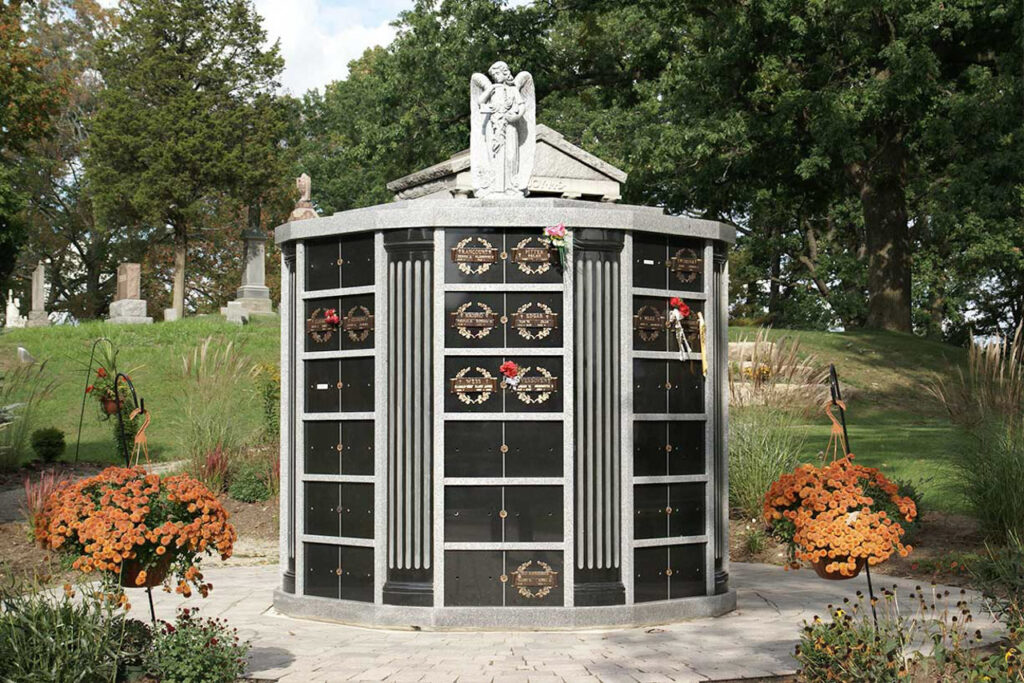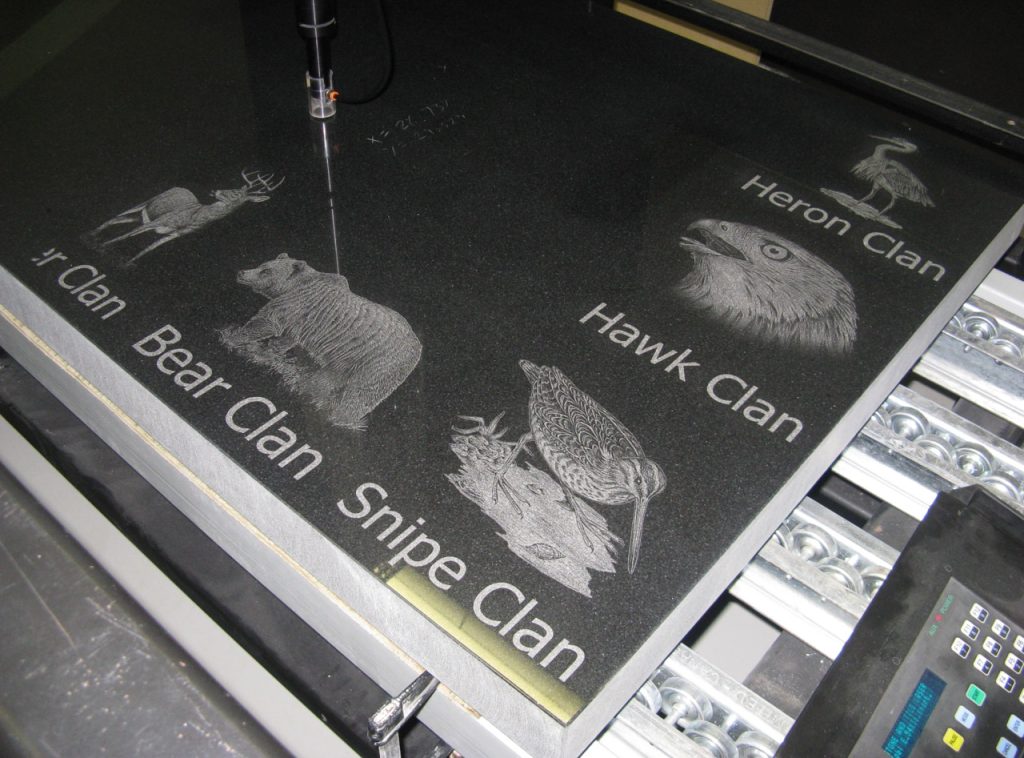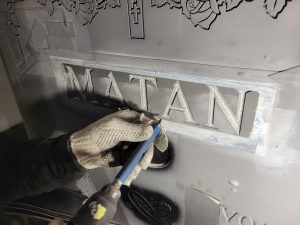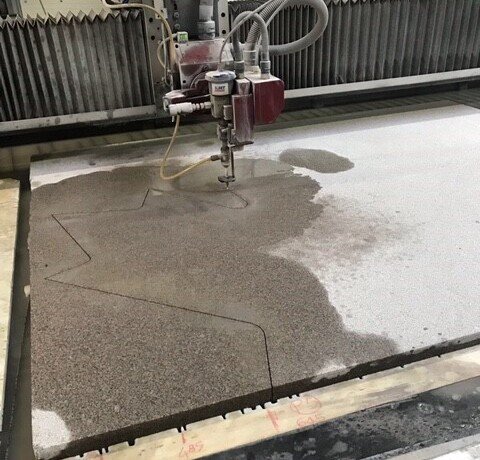Sometimes during conversations with unsuspecting friends, family members, or brand new clients, we’ll drop in a term such as ‘nosings’ or ‘lithichrome’ or ‘porosity’ – only to be greeted by stony silence (pun intended) or an amused ‘Huh?’
It got us thinking, why don’t we create an A-Z glossary of our most-used granite terms that we can share with you?
So that’s what we did.
Please note, however, this list is by no means exhaustive. So, consider this your part one.
Ready to learn more? Let’s go!
Your Complete A-Z of Granite Terms
A: Abrasive
This relates to the sandblasting process – the abrasive material is the one that does the cutting. Common abrasives include sand (although due to health and environmental concerns, this is being used less and less); aluminium oxide, silicone carbide, steel grit, plastic media, such as acrylic and polyester – and even walnut shells and glass beads.
B: Bench
As in a granite memorial bench, a seating structure made from granite and placed in a cemetery or memorial garden. We have vast experience of designing and installing memorial benches at HGH Granite.
C: Columbarium
A specially designed structure with niches or compartments to store cremated remains. It’s an above-ground burial setting that provides a respectful and organized place for families to remember their loved ones.
D: Diamond Wire Saw
A cutting tool that uses diamond studded cable to slice through granite blocks with precision.
E: Etching
A technique that involves using acid or a laser to create intricate designs, text, or images on the surface of granite. Read more about our etching service.
F: Flashing
Also known as frosting, it is the processing of removing the polished finish on granite using sandblast.
G: Grass marker
A flat, ground-level cemetery memorial. It’s installed flush to the ground and is typically made of stone or bronze.
H: Honing
The process of smoothing and finishing the surface of granite to a matte or satin-like appearance.
I: Inscription
The engraved text or design on a granite monument, often used to commemorate a person or event.
J: Joint
A dressed and cut stone surface where two pieces of stone are joined together, typically referring to the base of the main monument section.
K: Keystone
A wedge-shaped stone positioned at the peak of an arch, that secures all the other stones in position.
L: Lithichrome
A paint-like product applied to panels, carvings, or lettering to modify or intensify their inherent contrast or colour. The product offers a range of hues and tones for customization.
M: Monument
A structure or tablet, with an array of additional names such as memorials, headstones and gravestones, made from stone slabs or blocks, and typically found in cemeteries.
N: Nosings
Used in two contexts. On monuments, it refers to any stone projecting beyond the main surface line. On slant markers, it can denote either the top or front surface.
O: Ogee
A distinctive and ornate architectural design feature characterized by a curve that smoothly transitions from a concave to a convex form, resembling an elongated “S” shape. Often found in arches, moldings, and other decorative elements.
P: Porosity
The degree to which granite can absorb liquids, which affects its stain resistance.
Q: Quarrying
The process of extracting granite blocks or slabs from a quarry, often involving heavy machinery and drilling.
R: Restoration
The process of repairing, cleaning, and preserving old or weathered granite monuments to restore their original appearance. Learn more about granite repair.
S: Sandblasting
The process of propelling abrasive materials, such as sand or grit, against the surface of granite to create textures, patterns, or inscriptions. Find out more about our granite sandblasting services.

T: Tablet
The main part of a monument without lettering or ornament.
U: Unpolished Granite
The typical term for granite after it has been sawn, but has had no additional finish applied. It provides a subtle and lighter appearance compared to the glossy finish of polished granite.
V: Veining
The natural patterns in granite that are characterized by thin lines or streaks of contrasting colours.
W: Water Jet Cutting
A technology that uses high-pressure water mixed with abrasives to cut intricate designs and shapes in granite.
X: Xenolith
Let’s go scientific for this one! A xenolith is a rock fragment that becomes enveloped in an igneous rock, such as granite, during the cooling and solidification process.
Y:Yardstick
In years gone by, this was often used in the granite industry for measuring and cutting granite slabs accurately.
Z: Zoning
Regulations and codes often apply to the use of granite in construction and monument installations, specifying where and how it can be used.
So there you have it…
… An A to Z glossary of the rich tapestry of granite terms and techniques that shape our industry. From abrasives to zoning, each letter represents a component of our day-to-day life at HGH Granite.
Whether you’re exploring the intricacies of granite for the purpose of expanding your knowledge, creating a memorial – or you have a public architecture idea bubbling – we hope that by sharing these terms, we’ve paved the way for an exciting journey into the enduring and inspiring world of granite!
At HGH, we pride ourselves on sourcing the finest granite and providing the best service to our valued clients. If you’re working on a monument project, a timeless headstone, or a public architecture piece, our team – and their many years of expertise – are at your service!
Get in touch with us today.








